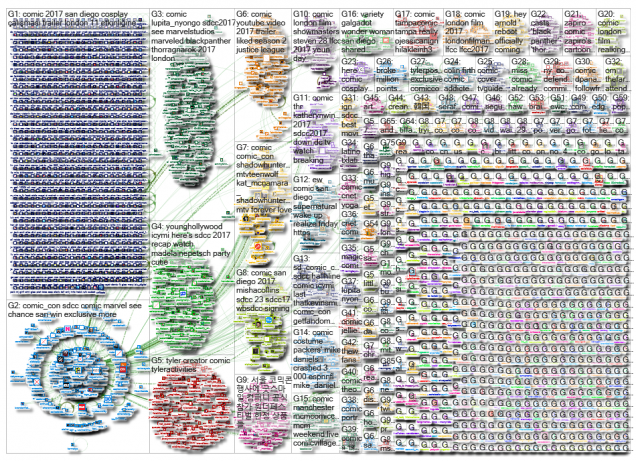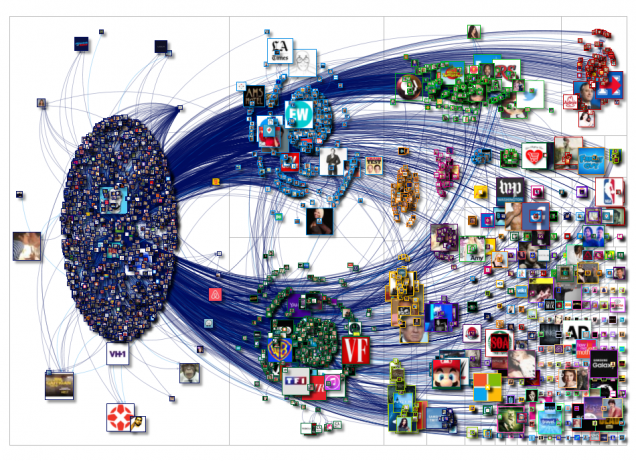
https://nodexlgraphgallery.org/Pages/Graph.aspx?graphID=117855
According to Smith et al.’s finding, the “Comic_Con” graph has a structure of Brand Clusters. As we can see from the graph, 5,606 Twitter users who tweeted about “Comic_Con” formed different small-sized subgroups. The users shown in this figure don’t follow or directly reply to or mention other users who also tweeted about the “Comic_Con” topic, that is, these people’s connections are rather disperse, even though they share the same interest in “Comic_Con”. It is also noticeable that users who mentioned this topic are using different language or located in different parts of the world, because some of them mentioned the Comic Con in San Diego, USA while the other mentioned the Comic Con held in Seoul, South Korea. The certain diverse background also implies that such global event may lead to online conversation from small groups widely spared in different locations with little overlap.

https://nodexlgraphgallery.org/Pages/Graph.aspx?graphID=51777
The graph represents a network of 4,005 Twitter users whose recent tweets contained “Hulu”, taken from a data set limited to a maximum of 18,000 tweets. Based on Smith et al.’s research finding, the graph has a structure of Tight Crowd, which features a highly interconnected group. Users who tweeted about “Hulu” share a common interest and are tightly connected by following and replying to or mentioning one another. Although we can find some small- or medium-sized subgroups in the upper and lower right corners, there are few isolates in this graph. The people thereby form a dense “Hulu” user group.
As Rainie and Wellman (2012) mentioned in their book Networked: The New Social Operating System networked individuals are willing to create content voluntarily to contribute testimonies, interact with others and build up community, the specific behavior may vary though. In the graph of “Comic_Con”, the users focus on the annual events held in different cities and countries and form a disperse community with certain similarity. People who tweeted about Comic Con tend to contribute content and share experience around this topic. In the “Hulu” graph, the users who talked about “Hulu”, which is an online video streaming service, are densely connected and form a strong user community by sharing user experience and asking for support from Hulu’s customer service account. Moreover, Hulu is an over-the-top media service focusing on market in United States and Japan, hence, its target consumers are more likely to be strongly connected than the participants of Comic Con, which is held in different regions in the world around the year.
According to Rainie and Wellman (2012), there are many advantages in forming these networks so that users can create collective goods. Especially by taking the advantage of the network effect, more participators the more influence the topic and the community will have on the public, and thereby be able to attract more content contributors. However, there could be a dark side of certain online network community. Junk information or hate speech can be found in the online environment which decrease the quality of online communication.